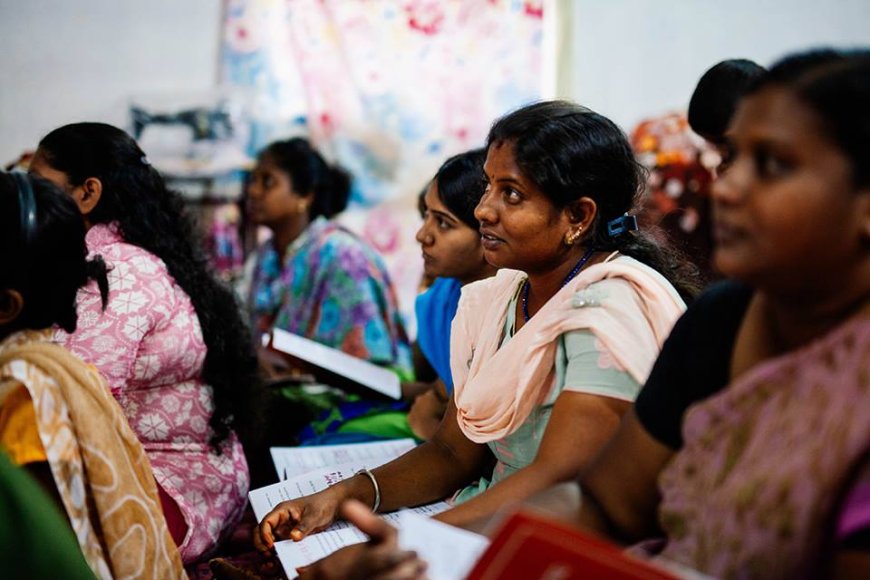Literacy classes change everything for a family – Mission Network News

India: Mission India Empowers Adults Through Education and Faith
![]()
India (MNN) — Mission India, an organization dedicated to the Sustainable Development Goals (SDGs), is making a significant impact on the lives of adults trapped in poverty through adult literacy classes. These classes not only introduce men and women to Christ but also provide them with essential reading and writing skills that can transform their entire lives.
Rajeshree’s Story: A Journey from Poverty to Hope
![]()
Rajeshree, a woman living in poverty, was caught in a downward spiral with her family. Illiterate and limited to low-paying day labor jobs, they were in desperate need of hope. However, everything changed when Rajeshree had the opportunity to enroll in an adult literacy class organized by Mission India.
“Through that teacher’s discipleship and the Bible-based lessons, Rajeshree actually came to faith in Jesus, and it changed everything.”
With the support of a compassionate Christian teacher, Rajeshree not only learned how to read and write but also found faith in Jesus. This transformation had a profound impact on her life. She and her husband quit their addictions to alcohol and tobacco, and Rajeshree received training on starting a small business. She learned how to make practical products like dish soap, laundry detergent, and cooking oil, which she could sell in her neighborhood.
Today, Rajeshree is not only a follower of Christ but also a successful small business owner. Her entire demeanor has changed from bitterness to kindness, and she is an inspiration to those around her.
Supporting Adult Literacy Classes
You can make a difference in the lives of individuals like Rajeshree by sponsoring a student to attend an adult literacy class. For just $40, you can provide a student with the opportunity to learn essential skills and discover the hope found in Christ.
Learn more and sponsor a literacy class student here.
Header photo courtesy of Mission India.
SDGs, Targets, and Indicators
1. SDGs Addressed or Connected to the Issues Highlighted in the Article:
- SDG 1: No Poverty
- SDG 4: Quality Education
- SDG 5: Gender Equality
- SDG 8: Decent Work and Economic Growth
- SDG 10: Reduced Inequalities
2. Specific Targets Based on the Article’s Content:
- Target 1.1: By 2030, eradicate extreme poverty for all people everywhere.
- Target 4.6: By 2030, ensure that all youth and a substantial proportion of adults, both men and women, achieve literacy and numeracy.
- Target 5.1: End all forms of discrimination against all women and girls everywhere.
- Target 8.3: Promote development-oriented policies that support productive activities, decent job creation, entrepreneurship, creativity, and innovation.
- Target 10.2: By 2030, empower and promote the social, economic, and political inclusion of all, irrespective of age, sex, disability, race, ethnicity, origin, religion or economic or other status.
3. Indicators Mentioned or Implied in the Article:
- Indicator 1.1.1: Proportion of the population living below the international poverty line.
- Indicator 4.6.1: Proportion of the population in a given age group achieving at least a fixed level of proficiency in functional (a) literacy and (b) numeracy skills, by sex.
- Indicator 5.1.1: Whether or not legal frameworks are in place to promote, enforce and monitor equality and non-discrimination on the basis of sex.
- Indicator 8.3.1: Proportion of informal employment in non-agriculture employment, by sex.
- Indicator 10.2.1: Proportion of people living below 50 percent of median income, by age, sex, and persons with disabilities.
Table: SDGs, Targets, and Indicators
| SDGs | Targets | Indicators |
|---|---|---|
| SDG 1: No Poverty | Target 1.1: By 2030, eradicate extreme poverty for all people everywhere. | Indicator 1.1.1: Proportion of the population living below the international poverty line. |
| SDG 4: Quality Education | Target 4.6: By 2030, ensure that all youth and a substantial proportion of adults, both men and women, achieve literacy and numeracy. | Indicator 4.6.1: Proportion of the population in a given age group achieving at least a fixed level of proficiency in functional (a) literacy and (b) numeracy skills, by sex. |
| SDG 5: Gender Equality | Target 5.1: End all forms of discrimination against all women and girls everywhere. | Indicator 5.1.1: Whether or not legal frameworks are in place to promote, enforce and monitor equality and non-discrimination on the basis of sex. |
| SDG 8: Decent Work and Economic Growth | Target 8.3: Promote development-oriented policies that support productive activities, decent job creation, entrepreneurship, creativity, and innovation. | Indicator 8.3.1: Proportion of informal employment in non-agriculture employment, by sex. |
| SDG 10: Reduced Inequalities | Target 10.2: By 2030, empower and promote the social, economic, and political inclusion of all, irrespective of age, sex, disability, race, ethnicity, origin, religion or economic or other status. | Indicator 10.2.1: Proportion of people living below 50 percent of median income, by age, sex, and persons with disabilities. |
Source: mnnonline.org








